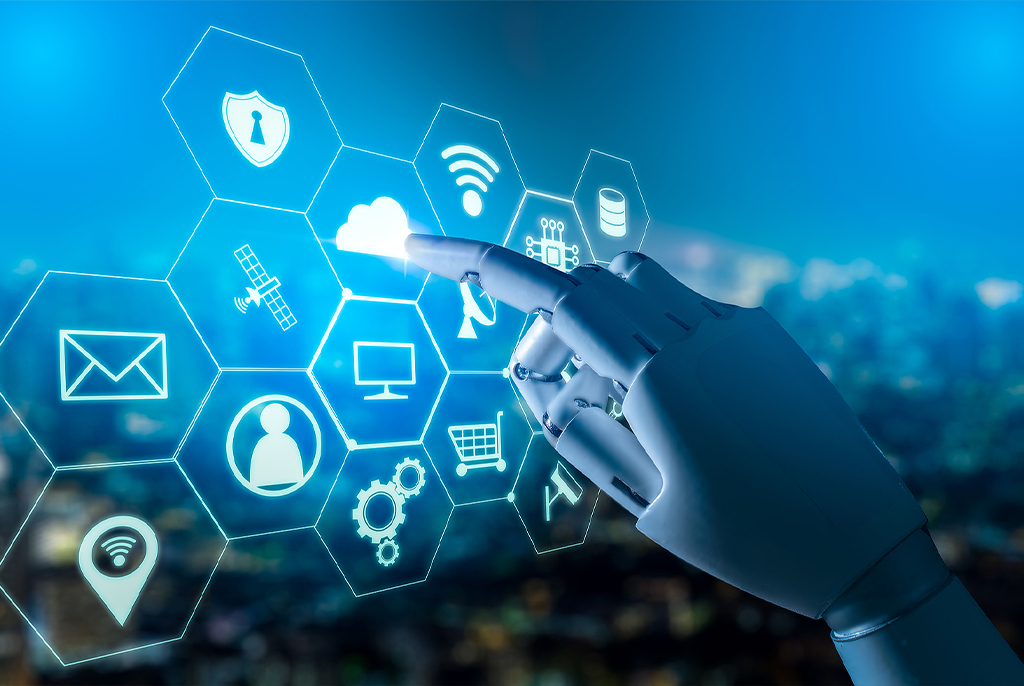One thing that I really enjoy about the end of the year is all the forecasts for the next year that start popping up.
Some headlines in the MIT Technology Review about a technology preview of the next century did catch my eye. But then I started thinking that this is so far out, it will impact the grandchildren of my great-grandchildren. So I thought I’d put that one aside for a later date – maybe one closer to the 22nd century, and focus on the almost here and almost now. Thus I landed on Gartner’s 2025 Top Strategic Technology Trends.
They grouped their trends into three categories – AI Imperatives and Risks, New Frontiers of Computing, and Human-machine Synergy – and outlined several sub-trends in each category.
AI Imperative and Risks
Under AI, Garner focused on agnetic AI, and on the challenges of governance, and figuring out how to combat disinformation. Agnetic AI pretty much means hands off. It’s a software approach that uses AI techniques and tools to make decisions and act on them in pursuit of goals – and to do so without much by way of human involvement. Agnetic AI has the potential to help organizations to achieve the promises of AI – greater productivity, freeing up workers to focus on higher-end tasks.
Empowering AI to act on its own leads, of course, to the need for governance platforms that can keep AI in check and “make sure AI is reliable, transparent, fair and accountable while also meeting safety and ethical standards.” This will be especially critical in industries that are highly regulated, but even non-regulated industries want to ensure that people’s privacy is maintained, and that there’s no unintended bias at play.
When it comes to AI, a problem we’ve increasingly the problem of disinformation, with more and more elaborate fraud schemes, crazier and crazier conspiracy theories that stoke fear and wreak havoc on society, and ever more elaborate (and convincing) attacks on businesses that undermine products and brands, wreck reputations, and manipulate stock prices. No wonder Gartner sees disinformation security coming to the fore.
New frontiers of computing
What does Gartner see for next year when it comes to computing? For one thing, cryptography in the post-quantum will become more and more critical, especially given that quantum computing will be deployed by criminals to decrypt stolen data, including data that was encrypted using traditional approaches. (Sophisticated cybercriminals have already planning for this future, with “harvest now, decrypt later” strategies, stealing even exceptionally well-encrypted data and hanging on to it with the assumption that, with quantum computing, they’ll be able to crack the code.
Gartner also sees ambient invisible intelligence in the future. This is “the widespread use of small, low-cost tags and sensors to track the location and status of various objects and environments.” The amount of data available for analysis will continue to grow exponentially, and the “real-time visibility” it provides will have a major impact on a range of industries: supply chains, healthcare, retail.
Demands for sustainability will grow, especially as AI is such a tremendous driver of energy consumption.
While conventional processing improvements are reaching their limits, new computing technologies, such as graphics processing units (GPUs), neuromorphic computing and quantum computing, are expected to deliver the substantial energy-efficiency gains needed in the next five to 10 years.
Also up will be hybrid computing, where all sorts of technologies “— such as CPUs, GPUs, edge devices, ASICs, and neuromorphic, quantum and photonic systems — “ are combined to solve especially thorny problems.
Human-machine synergy
It’s good to keep in mind that, behind all the AI, beyond all the quantum computing, there are human beings, and Gartner foresees “enhanced interactions” between the physical and virtual worlds; robots being an increasing part of our every day lives; and “technologies that directly influence cognition and performance.”
Spatial computing will be getting more attention as augmented and mixed reality, along with AI technologies in general, will make it possible for “users to interact with [the physical world] in an immersive, realistic and intuitive experience.”
Robots will become more skilled, with polyfunctional robots able to take care of multiple tasks. E.g., warehouse robots will be able to pick, pack, and transport goods. And, in the final trend Gartner identified, neurological enhancement, “using technologies that read and decode brain activity and optionally write to the brain,” will improve human cognition, which will hopefully allow us to keep up with those polyfunctional robots.
Source of image: Vistage
